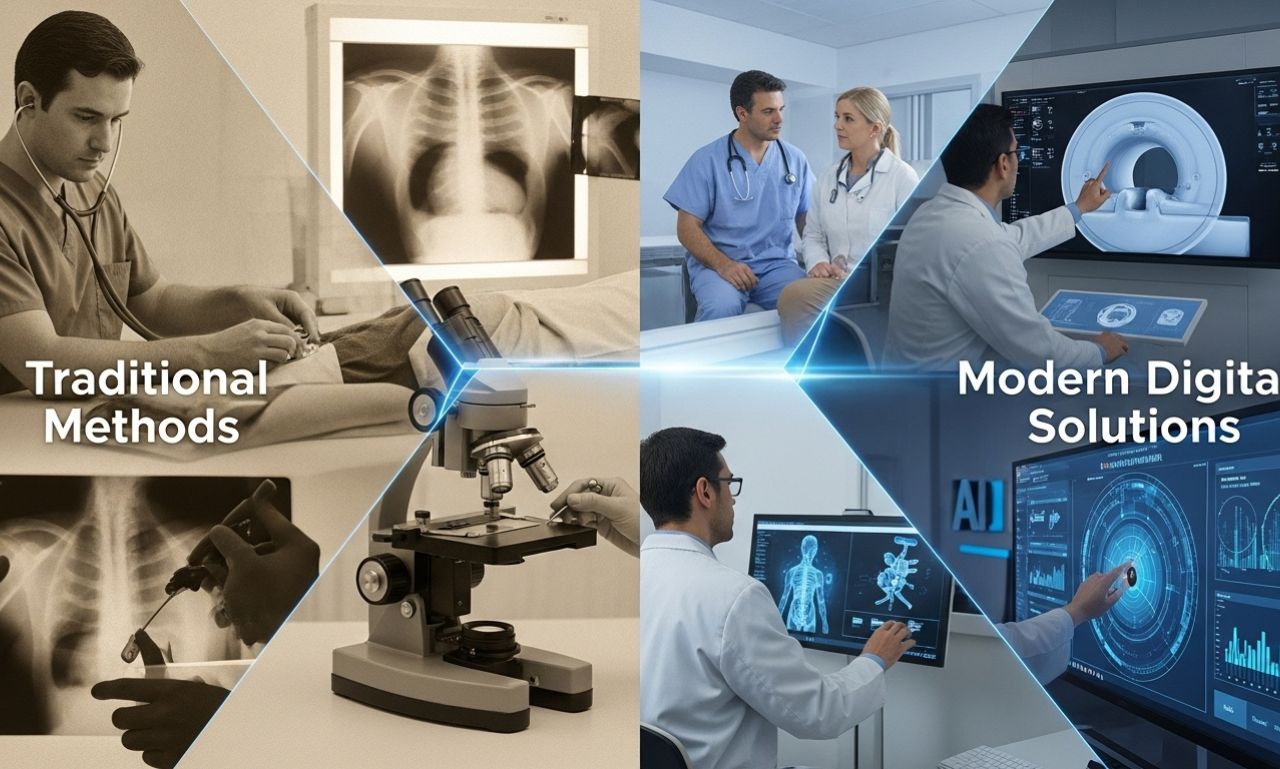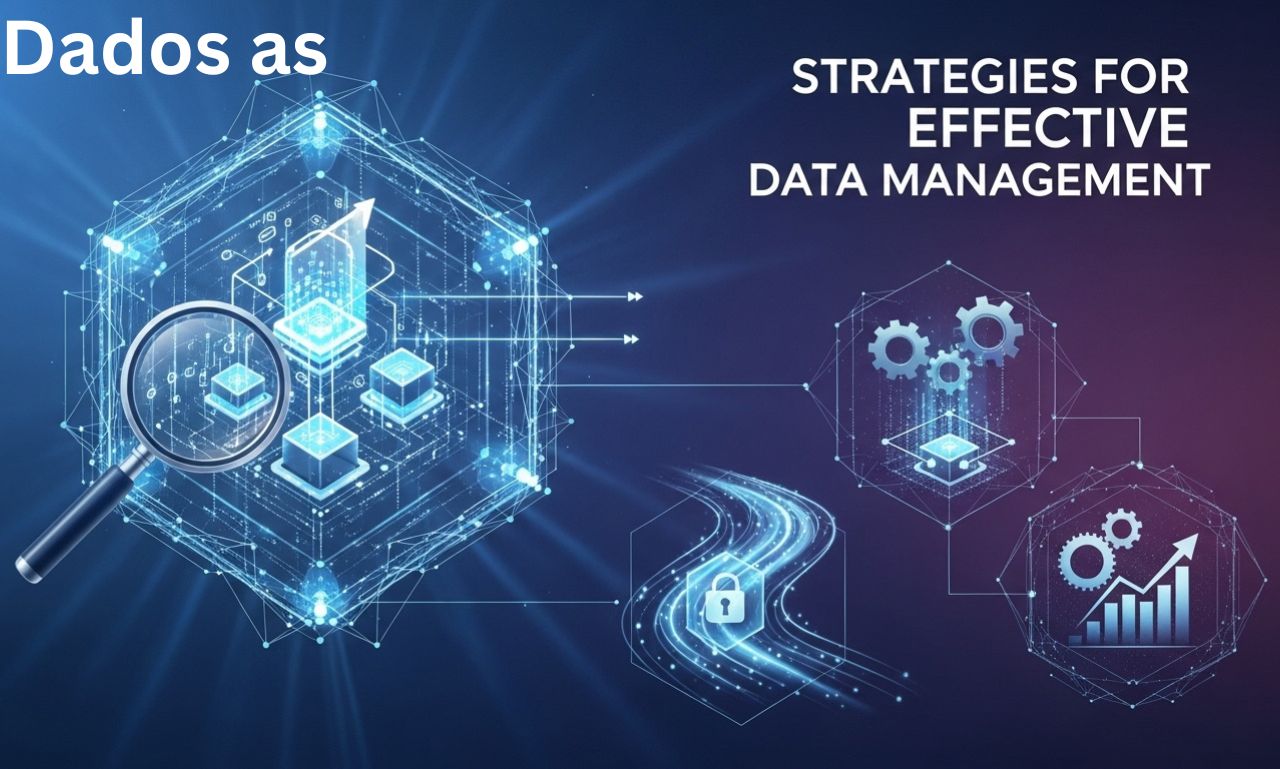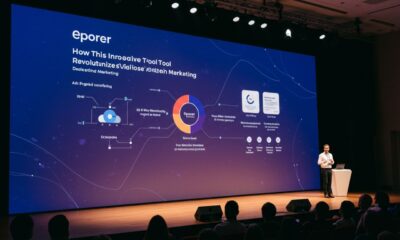Digital Marketing
Diag Images: Traditional Methods to Modern Digital Solutions

Diagnostic imaging has revolutionized the way we understand and diagnose medical conditions. From traditional X-rays to advanced digital technologies, the evolution of diag images is fascinating. These images give healthcare professionals insight into what’s happening inside the human body, allowing for better diagnoses and treatment plans. As technology continues to advance, so do these vital tools in medicine.
The journey from conventional methods to modern digital solutions reflects a significant leap forward in how we visualize health issues. But what exactly are diag images? Let’s explore this captivating field that bridges art and science while ensuring patient care remains at its core.
What is Diag Images?
Diag images refer to the visual representations used in medical diagnostics. These images play a crucial role in identifying and evaluating various health conditions.
Typically produced through imaging technologies, diag images include X-rays, MRIs, CT scans, and ultrasounds. Each method provides unique insights into the human body’s structure and function.
The primary purpose of diag images is to aid healthcare professionals in diagnosing illnesses accurately. They help visualize internal organs, tissues, and bones without invasive procedures.
Advancements in imaging technology have significantly improved the clarity and detail of these visuals. This has enhanced diagnostic accuracy while reducing patient discomfort during examinations.
Moreover, diag image formats are evolving continuously with digital solutions that streamline accessibility for both practitioners and patients alike. This evolution reflects an ongoing commitment to improving patient care through innovative techniques.
Traditional Methods of Diagnostic Imaging
Traditional methods of diagnostic imaging have laid the groundwork for today’s advanced techniques. X-rays, one of the oldest forms, use radiation to create images of bones and certain organs. They are quick and effective for diagnosing fractures and infections.
Ultrasound is another cornerstone in this field. It employs sound waves to visualize soft tissues, making it invaluable for monitoring pregnancies or examining abdominal organs. Unlike X-rays, it poses no risk of radiation exposure.
CT scans offer a more detailed view by combining multiple X-ray images taken from different angles. This method has revolutionized how conditions like tumors and internal injuries are diagnosed.
MRI uses powerful magnets and radio waves instead of ionizing radiation. It provides high-resolution images crucial for assessing brain disorders, spinal issues, and joint problems.
Despite their limitations compared to digital technologies, these traditional methods remain integral in many medical settings today.
Advancements in Digital Technology for Diag Images
The evolution of digital technology has transformed diag images in remarkable ways. High-resolution imaging techniques, such as MRI and CT scans, now deliver stunning clarity. This level of detail aids radiologists in making faster and more accurate diagnoses.
Artificial intelligence is another game-changer. AI algorithms analyze vast amounts of data quickly, identifying patterns that might elude the human eye. This enhances diagnostic accuracy while reducing the workload for healthcare professionals.
Cloud storage solutions are also revolutionizing how diag images are stored and shared. Medical facilities can access patient records anytime, anywhere, streamlining collaboration between specialists across different locations.
With advancements like 3D imaging and virtual reality simulations, practitioners can visualize complex anatomical structures vividly. These innovations not only enhance understanding but also improve treatment planning significantly.
Benefits of Digital Diag Images
Digital diag images revolutionize the way healthcare professionals diagnose and treat patients. One key benefit is improved accessibility. These images can be easily shared among specialists, enhancing collaboration.
Another significant advantage is the speed of analysis. Digital technology allows for rapid image processing, which means faster diagnosis and treatment initiation. This efficiency can be crucial in emergency situations where every second counts.
Additionally, digital diag images often result in higher resolution and clarity compared to traditional methods. Enhanced image quality aids in more accurate assessments, reducing the likelihood of misdiagnosis.
The storage capabilities are also noteworthy. Digital formats eliminate the need for physical space traditionally required by film-based imaging systems, making it easier to manage large volumes of patient data securely.
Advancements in software allow for sophisticated tools and algorithms that assist physicians with interpretation, ultimately leading to better patient outcomes through informed decision-making.
Challenges and Concerns with Digital Diag Images
Digital diag images have transformed healthcare, but they come with their own set of challenges. One significant concern is data security. With patient information stored digitally, there’s always a risk of cyber attacks or unauthorized access.
Another issue is the potential for over-reliance on technology. While digital tools enhance accuracy, misinterpretation can occur if radiologists become too dependent on software analysis rather than their expertise.
Quality control also poses difficulties. Variability in image resolution and consistency across different devices can lead to discrepancies in diagnosis.
The cost associated with transitioning from traditional methods to digital systems can be prohibitive for some facilities. Investing in advanced technology requires substantial financial resources that not every institution may possess.
These challenges invite ongoing discussions about improving digital diag image practices while ensuring patient care remains paramount.
Future Predictions for the Use of Digital Diag Images
The future of digital diag images is poised for remarkable transformation. With artificial intelligence and machine learning on the rise, diagnostic accuracy will increase significantly. Algorithms can analyze vast datasets far quicker than human eyes.
Telemedicine continues to gain traction. Patients will access their diag images from remote locations, making consultations easier and more efficient. This instant access means faster diagnoses and timely treatments.
Integration with wearable technologies could also come into play. Imagine a world where daily health metrics combine seamlessly with diagnostic imaging data for a comprehensive view of one’s health.
Moreover, cloud storage solutions enhance collaboration among medical professionals globally. Specialists can share insights instantly, leading to better patient care across borders.
As regulations evolve, we might see enhanced privacy measures ensuring that these digital records remain secure while still being accessible when needed most. The horizon looks bright for those in the realm of diagnosis through technology.
Conclusion
The evolution from traditional methods of diagnostic imaging to modern digital solutions has transformed the healthcare landscape. Diag images now serve as essential tools for medical professionals, enhancing their ability to diagnose and treat patients effectively.
While traditional techniques laid the groundwork, advancements in technology have opened new avenues for precision and efficiency. Digital diag images offer numerous benefits, including quicker access to data and improved collaboration among healthcare providers. However, challenges such as data security and potential misinterpretations still need attention.
As we look ahead, it’s clear that the future will continue to embrace innovation in diagnostic imaging. We can expect further integration of artificial intelligence and machine learning to enhance accuracy even more. The journey of diag images is far from over; it’s just beginning a new chapter filled with possibilities that could redefine patient care in remarkable ways.
Digital Marketing
Dados as: Strategies for Effective Data Management

In today’s digital landscape, effective data management isn’t just a luxury; it’s a necessity. With the sheer volume of information generated daily, businesses must ensure they handle their data wisely. Enter “Dados as,” a concept that revolutionizes how organizations think about and utilize their data assets. Understanding this approach can unlock new efficiencies and insights for your business.
As we dive into the intricacies of effective data management, we’ll explore why it matters more now than ever before. From grasping the types of data you encounter to tackling common challenges head-on, embracing smart strategies will set you apart from your competition. Let’s embark on this journey toward mastering your organization’s most valuable resource: its data!
What is Dados as?
Dados as is a modern approach to data management that focuses on the seamless integration and utilization of data across various platforms. It emphasizes flexibility, allowing organizations to adapt their strategies based on evolving needs.
This concept leverages cloud technologies and advanced analytics, enabling businesses to access and manipulate data efficiently. By adopting Dados as, companies can streamline their operations while enhancing decision-making processes.
The beauty of Dados as lies in its scalability. As an organization grows, so does its ability to manage vast amounts of information without compromising performance or security. This adaptability ensures that firms remain competitive in today’s fast-paced digital landscape.
Moreover, Dados as promotes collaboration among teams by providing centralized access to critical data resources. This unity fosters innovation and drives strategic initiatives forward with greater ease than traditional methods allow.
The Importance of Effective Data Management
Effective data management is crucial in today’s digital landscape. Organizations generate vast amounts of data daily, making it essential to handle this information systematically.
When managed properly, data becomes a strategic asset rather than a liability. It can support decision-making and drive innovation across various departments.
Moreover, effective management enhances operational efficiency. By organizing and accessing data promptly, businesses can streamline processes and reduce costs associated with mismanagement.
Additionally, compliance with regulations hinges on how well data is managed. With laws like GDPR shaping the way organizations operate, adhering to guidelines protects both the business and its customers.
Agile responses to market changes are achievable when companies have robust data practices in place. Understanding patterns and insights fosters adaptability in an ever-evolving environment.
Types of Data and their Management Requirements
Data comes in various forms, each with distinct management needs. Structured data is organized and easily searchable. Think spreadsheets or databases. This type requires robust database management systems for efficiency.
Unstructured data, on the other hand, lacks a predefined format. Social media posts and emails fall into this category. Managing unstructured data often involves advanced analytics tools to extract meaningful insights.
Semi-structured data sits between these two extremes; it has some organizational properties but doesn’t conform to strict schemas. Examples include XML files and JSON documents. Handling semi-structured data demands flexible storage solutions that can adapt as needed.
Each type’s unique characteristics dictate specific strategies and tools for effective management, emphasizing the necessity of tailored approaches in any comprehensive dados as framework.
Common Challenges in Data Management and How to Overcome Them
Data management often presents several challenges that organizations must navigate effectively. One common issue is data silos, where information exists in isolated systems, making it hard to obtain a holistic view. To combat this, fostering cross-departmental collaboration can help break down these barriers.
Another significant challenge is data quality. Poor-quality data leads to incorrect insights and decisions. Implementing regular audits and validation processes can enhance the accuracy of your datasets.
Compliance with regulations such as GDPR or HIPAA poses another hurdle for many businesses. Staying informed about changing laws and investing in compliance training ensures that your organization remains on track.
Resistance from employees regarding new technologies can impede progress. Providing proper training and highlighting the benefits of effective data management systems fosters a culture of acceptance and innovation within your team.
Strategies for Effective Data Management
Effective data management requires strategic planning. Start by establishing clear policies and procedures. This creates a structured framework for data handling, ensuring consistency across your organization.
Next, invest in robust data management tools and technologies. These resources streamline processes and improve accuracy. Automation can save time while minimizing human error.
Regular backups are essential to safeguard against data loss. Implement a comprehensive disaster recovery plan that outlines steps to take during unexpected events.
Data security shouldn’t be an afterthought; prioritize privacy measures to protect sensitive information from breaches.
Training is key—ensure employees understand proper data handling techniques. Knowledgeable staff can make a significant difference in maintaining effective practices within the workplace.
Establishing Clear Policies and Procedures
Establishing clear policies and procedures is the backbone of effective data management. These guidelines set expectations for how data should be handled throughout the organization.
When creating these policies, it’s essential to involve key stakeholders from various departments. This collaboration ensures that all perspectives are considered, leading to comprehensive and practical solutions.
The policies should outline roles and responsibilities related to data handling. Employees need to know who is accountable for what tasks concerning data collection, storage, and access.
Additionally, clarity in terminology helps minimize confusion. Define specific terms related to your organization’s data practices so that everyone is on the same page.
Regular reviews of these policies keep them relevant as technology evolves or regulatory requirements change. A proactive approach fosters a culture of accountability around data integrity within your team.
Utilizing Data Management Tools and Technologies
Embracing data management tools and technologies can drastically improve how organizations handle information. These solutions streamline processes, making it easier to collect, store, and analyze critical data.
Modern software platforms offer features like automated data entry and real-time analytics. This reduces manual errors while enhancing decision-making capabilities.
Cloud-based services have transformed accessibility. Now, teams can collaborate seamlessly from different locations without compromising security.
In addition, advanced technologies such as artificial intelligence (AI) are revolutionizing data analysis. They sift through vast amounts of information quickly, uncovering patterns that might go unnoticed by humans.
Having the right tools also promotes compliance with regulations such as GDPR or HIPAA. When organizations utilize effective data management systems, they not only safeguard sensitive information but also build trust with clients and customers.
Regular Backups and Disaster Recovery Plans
Regular backups are the backbone of any effective data management strategy. They ensure that critical information is not lost in case of unexpected events. Whether due to hardware failure, cyberattacks, or natural disasters, having a reliable backup system can save an organization from significant losses.
It’s essential to establish a consistent schedule for backups. Daily or weekly intervals may work well depending on the volume and importance of your data. Automating this process can reduce human error and guarantee adherence to the schedule.
Disaster recovery plans complement regular backups by outlining steps to restore operations swiftly after a data loss incident. This includes identifying key personnel, necessary resources, and timelines for restoring services.
Testing these plans regularly is crucial as it prepares teams for real-life scenarios. Familiarity with procedures enables quicker response times during emergencies, minimizing downtime and disruption in business continuity.
Ensuring Data Security and Privacy
Data security and privacy are non-negotiable in today’s digital landscape. Organizations must prioritize safeguarding sensitive information to maintain trust and compliance.
Implementing robust encryption methods is essential. This protects data both at rest and during transmission, making it significantly harder for unauthorized users to access valuable information.
Regular audits of security protocols can identify vulnerabilities before they become problems. Staying ahead involves continually assessing your strategies against emerging threats.
Employee awareness plays a crucial role in data protection. Training sessions focused on recognizing phishing attempts and safe data handling practices empower staff to be vigilant protectors of company assets.
An effective incident response plan should also be established. This ensures that if a breach occurs, the organization can quickly mitigate damage while maintaining transparency with affected parties.
Incorporating these measures builds a culture of accountability around data management within an organization, reinforcing the importance of secure practices across all levels.
Training Employees on Proper Data Handling
Training employees on proper data handling is crucial for any organization. Knowledgeable staff are the first line of defense against data breaches and mishandling.
Start with a comprehensive onboarding program that emphasizes data management principles. Use real-world scenarios to illustrate potential risks and consequences. This makes learning relatable and impactful.
Regular refresher courses keep skills sharp. As technology evolves, so do threats and best practices. Stay updated by incorporating new techniques into training sessions.
Encourage an open dialogue about data issues. Create a culture where employees feel comfortable reporting concerns without fear of reprimand. Peer discussions can often lead to innovative solutions.
Utilize engaging formats like interactive workshops or online modules to enhance retention. Visual aids, quizzes, and group activities make learning more enjoyable while solidifying concepts in memory.
Fostering a sense of responsibility around data encourages better habits across the board—ultimately protecting your organization’s valuable information assets.
Conclusion
Effective data management is essential in today’s digital landscape. Properly managing your data not only enhances efficiency but also fortifies your organization against potential risks. Implementing strategies like establishing clear policies, utilizing advanced tools, and ensuring security can significantly improve how you handle information.
As organizations continue to evolve, the importance of dados as becomes increasingly relevant. By understanding its impact on data management, businesses can adapt their operations to thrive in a competitive environment. Investing in employee training further solidifies this foundation, empowering teams to manage data responsibly and effectively.
Embracing these strategies will pave the way for more robust and reliable data practices that align with modern demands. The journey toward effective data management may be complex, but the rewards are invaluable for any organization dedicated to success.
Digital Marketing
Gldyql: User Stories and Testimonials That Inspire

In a world where consumers are bombarded with marketing messages, standing out can feel like an uphill battle. Enter Gldyql—a platform that harnesses the power of user stories and testimonials to create genuine connections between brands and their audiences. As potential customers scroll through endless options, they crave authenticity. They want to hear from others who have walked the same path before them. With Gldyql, businesses can tap into this need for real experiences, transforming ordinary customer feedback into compelling narratives that inspire trust and loyalty. Let’s explore how Gldyql is reshaping the way companies engage with their audience through powerful storytelling.
What is Gldyql and how does it work?
Gldyql is a cutting-edge platform designed to harness the power of user-generated content. It focuses on collecting authentic stories and testimonials from real customers, allowing brands to showcase genuine experiences.
The process begins when businesses invite their users to share their journeys. Gldyql simplifies this by providing easy-to-use tools for submission. Customers can easily narrate their experiences through text, images, or videos.
Once collected, these stories are curated and displayed prominently on brand websites and social media channels. This not only enhances credibility but also fosters deeper connections with potential customers.
By tapping into the voices of satisfied users, Gldyql helps companies build trust in an increasingly skeptical market. The result? A more relatable brand presence that resonates with consumers looking for authenticity.
The importance of user stories and testimonials in marketing
User stories and testimonials are powerful tools in marketing. They create a human connection that statistics alone often fail to achieve. Consumers want to know how products impact real lives, not just what the latest features are.
When potential customers read about someone else’s positive experience, it builds trust. Authentic voices resonate more than polished advertisements. A genuine story can turn skepticism into curiosity.
Testimonials provide social proof, validating your brand’s promises. They highlight the benefits of your offerings through relatable narratives. This personal touch makes your message memorable and impactful.
Moreover, user-generated content fosters community engagement. Customers feel valued when their experiences contribute to a brand’s narrative. This sense of belonging can drive loyalty and encourage word-of-mouth referrals.
Emphasizing user stories transforms marketing from a monologue into a dialogue, making brands seem approachable and trustworthy.
How Gldyql utilizes user stories and testimonials to connect with customers
Gldyql excels in leveraging user stories and testimonials to build authentic connections with customers. By showcasing real experiences, the platform invites potential users into a community of shared journeys.
Each story reflects genuine emotions and outcomes, making it easier for prospects to relate. This approach fosters trust, encouraging new users to envision themselves enjoying similar benefits.
The curated testimonials highlight diverse voices, ensuring that various demographics feel represented. Gldyql uses this authenticity as a bridge between brands and their audience.
Through interactive elements like video snippets or social media highlights, these narratives come alive. Such dynamic presentations not only engage viewers but also create memorable impressions that linger long after they’ve left the page.
In essence, Gldyql transforms customer feedback into powerful storytelling tools that resonate deeply within its target market.
Real life examples of successful campaigns using Gldyql
Brands across various industries have harnessed the power of Gldyql to drive their marketing efforts. One standout example is a local coffee shop that created a campaign featuring customer stories. By sharing heartfelt testimonials about community connections over coffee, they attracted new patrons and fostered loyalty among existing ones.
Another compelling case involved an online fashion retailer. They encouraged customers to post photos wearing their products alongside personal experiences. This initiative not only boosted engagement on social media but also increased sales by showcasing real people loving their brand.
A nonprofit organization utilized Gldyql to highlight its impact through user stories from beneficiaries. These authentic narratives resonated with potential donors, leading to a significant rise in contributions and awareness for their causes.
Each of these examples illustrates how effective storytelling can transform customer interactions into meaningful relationships while driving tangible results.
Tips for creating impactful user stories and testimonials
Crafting impactful user stories starts with authenticity. Encourage customers to share their genuine experiences. A personal touch resonates more than a polished narrative.
Focus on emotional connections. Highlight challenges your users faced and how your product helped them overcome those hurdles. This creates relatability.
Visual elements enhance storytelling. Incorporate photos or videos of real customers using your product. Visuals capture attention and make the story memorable.
Keep it concise yet detailed. Capture key moments without overwhelming the reader with unnecessary information.
Encourage variety in testimonials by showcasing diverse customer demographics and use cases. This broadens appeal and demonstrates versatility.
Always seek permission before sharing someone’s story publicly. Respect for privacy builds trust, showing you value their experience as much as they do.
The role of authenticity in user stories and testimonials
Authenticity is the cornerstone of effective user stories and testimonials. People crave genuine experiences they can relate to, especially in a market flooded with polished marketing pitches.
When customers share their true feelings about a product or service, it resonates more deeply than scripted endorsements. These honest narratives create trust. Potential buyers are more likely to engage when they see real people sharing real outcomes.
Moreover, authentic testimonials highlight both strengths and weaknesses. This transparency fosters credibility and allows brands to address concerns openly.
In today’s digital landscape, where consumers have endless choices, authenticity stands out as a key differentiator. A heartfelt story can transform a casual browser into a loyal customer by forging an emotional connection that feels personal and relatable.
Harness the power of Gldyql to elevate your brand through genuine customer experiences
Harnessing the power of Gldyql can transform how your brand interacts with customers. By leveraging authentic user stories, you create a narrative that resonates deeply.
These genuine experiences serve as powerful social proof. Potential customers relate to real individuals and their journeys. This connection fosters trust and loyalty in ways traditional advertising simply cannot achieve.
Incorporating Gldyql into your marketing strategy means showcasing diverse voices. Highlighting various customer demographics helps broaden your audience reach while making everyone feel included.
Moreover, visual storytelling paired with testimonials enhances engagement. Videos or images bring these stories to life, making them more relatable and memorable for viewers.
Utilizing Gldyql effectively can elevate not just awareness but also emotional connections between your brand and its audience. When consumers see themselves reflected in the stories shared, they’re more likely to engage actively with your products or services.
Conclusion
Gldyql is more than just a platform; it’s a movement that taps into the power of authentic voices. By showcasing user stories and testimonials, brands can foster real connections with their audience. The emotional resonance created through these genuine experiences leads to stronger customer loyalty and trust.
By leveraging Gldyql’s unique capabilities, businesses can elevate their marketing strategies. Sharing real-life stories not only promotes products but also builds community around shared values and experiences.
Embracing authenticity in your messaging will differentiate your brand in a crowded market. Take inspiration from successful campaigns that have utilized Gldyql effectively—these examples highlight the incredible potential of storytelling in today’s digital landscape.
As you think about integrating user-generated content into your marketing efforts, keep these tips in mind for maximum impact: focus on relatable narratives, ensure diverse perspectives are represented, and prioritize quality over quantity.
Harnessing the power of Gldyql allows brands to connect on deeper levels with customers while driving engagement and growth. It’s time to tell those inspiring stories that make an impact—your audience is waiting.
Digital Marketing
Avtub: Harnessing the Power for Content Creation and Sharing

In today’s fast-paced digital world, video content is king. It captivates audiences, conveys messages quickly, and leaves a lasting impact. But with so many platforms available for creators to share their work, how do you find the right one? Enter Avtub—a dynamic platform that’s reshaping the way we create and share videos. Whether you’re an aspiring filmmaker or just someone looking to express your creativity, Avtub offers tools tailored to meet your needs. Let’s dive into what makes Avtub stand out in the crowded landscape of content creation solutions.
What is Avtub?
Avtub is an innovative platform designed for video content creators. It offers a seamless way to create, share, and monetize videos all in one place. Whether you’re a seasoned videographer or just starting out, Avtub caters to various skill levels.
The interface is user-friendly and accessible. Users can easily upload their footage, edit it on the go, and publish it with minimal hassle. The focus on community also sets Avtub apart; creators can connect with each other for collaboration and feedback.
Additionally, Avtub supports different types of video formats. This flexibility allows users to experiment with diverse styles—from vlogs to tutorials—enhancing creativity in content creation. Its built-in analytics tools provide insights into viewer engagement as well.
With its rich features tailored specifically for video enthusiasts, Avtub stands out in the crowded digital landscape dedicated to visual storytelling.
The Rise of Video Content
Video content has surged in popularity, transforming how we consume information. People are increasingly drawn to visuals that tell stories quickly and effectively.
Platforms like YouTube and TikTok have paved the way for this trend. They cater to short attention spans while offering endless entertainment and education. Users find it easier to digest complex topics through engaging video formats.
The rise of social media has further fueled this phenomenon. Video snippets are everywhere—on news feeds, advertisements, and even blogs. This shift means brands must adapt their strategies or risk falling behind.
As technology advances, so does the quality of videos we produce. High-definition cameras and editing software are more accessible than ever before, empowering creators with tools that elevate their storytelling capabilities.
This evolution indicates a promising future for video content creation across various industries as audiences continue seeking immersive experiences over traditional text-based materials.
Features and Benefits of Avtub
Avtub offers a range of features designed to enhance the content creation experience. Its user-friendly interface makes it simple for anyone to start creating videos, regardless of technical skill.
One standout feature is the built-in editing tools that allow creators to add effects, transitions, and captions effortlessly. This functionality ensures polished results without needing external software.
Another major benefit is community engagement. Avtub encourages interaction through comments and shares, fostering a supportive environment among users. Creators can connect with their audience in real-time, building loyalty and expanding reach.
Moreover, Avtub supports various formats—be it tutorials or vlogs—catering to diverse content styles. With seamless integration across platforms, sharing your creations becomes hassle-free.
The analytics dashboard provides insights into viewer behavior, enabling users to optimize future content based on data-driven decisions. Each feature works together to elevate both creativity and outreach potential on this platform.
How to Use Avtub for Content Creation
Getting started with Avtub is straightforward. First, sign up for an account to unlock its features and tools.
Once you’re in, explore the user-friendly interface. You’ll find options for recording directly or uploading existing videos effortlessly. This flexibility allows creators to choose their preferred method.
Editing your content is a breeze with Avtub’s built-in tools. Trim clips, add effects, and insert text overlays that enhance viewer engagement without overwhelming them.
Don’t forget about collaboration features! Work alongside other creators easily by sharing drafts or getting feedback before finalizing your project.
When you’re satisfied with your video, it’s time to optimize it for search engines. Use relevant keywords like “avtub” in titles and descriptions to enhance visibility across platforms.
With these steps, you can harness the full potential of Avtub while creating captivating content that resonates with viewers worldwide.
Sharing Your Videos on Avtub
Sharing your videos on Avtub is a straightforward process that opens up a world of possibilities for creators. Once you’ve uploaded your content, you can easily distribute it to a broad audience.
The platform allows seamless sharing across various social media channels. This feature enhances your video’s reach and helps attract more viewers. You can also share links directly with friends or collaborators for targeted engagement.
Avtub encourages community interaction through comments and reactions. Engaging with your audience fosters loyalty and keeps them coming back for more of your content.
Moreover, the customizable privacy settings give you control over who sees what, allowing you to tailor your sharing strategy based on specific goals or audiences.
With these tools at your fingertips, spreading the word about your videos becomes an enjoyable part of the creative process.
Monetization Opportunities on Avtub
Avtub opens the door to various monetization opportunities for creators. Users can earn revenue through ad placements, allowing brands to connect with audiences seamlessly.
Affiliate marketing is another avenue. By promoting products or services within videos, creators can drive sales and earn commissions.
Subscription models present a unique chance for loyal fans to support their favorite content makers directly. This fosters community engagement while providing a steady income stream.
Additionally, Avtub’s live streaming feature enables creators to host real-time events. Viewers can tip or donate during these sessions, enhancing interaction and financial benefits simultaneously.
Selling digital products or merchandise related to video content is also feasible. Creators can leverage their audience base effectively in this way.
With multiple pathways available, Avtub encourages innovative thinking around monetization strategies that resonate with specific target audiences.
Competitors and Comparison
Avtub stands out in a crowded market filled with video sharing platforms. However, it faces stiff competition from established giants like YouTube and Vimeo. Each platform has its unique strengths.
YouTube offers vast reach and a diverse audience. Its monetization options are attractive for creators looking to earn revenue through ads or sponsorships. But with this comes saturation, making visibility challenging for new content producers.
Vimeo caters more to professionals seeking high-quality video hosting solutions without intrusive ads. Their focus on creative tools makes them appealing but may lack the community aspect that Avtub fosters.
Emerging competitors also make their mark by tapping into niche audiences or innovative features. Platforms like TikTok emphasize short-form content, attracting younger demographics who prefer quick consumption over long videos.
By understanding these dynamics, users can better navigate their choices in the evolving realm of video creation and sharing.
Future of Avtub and the Role of Video in Content Creation
The future of Avtub looks promising as video continues to dominate the digital landscape. With an increasing number of users consuming content through visual mediums, platforms like Avtub are poised for significant growth.
As technology advances, so will the features offered by Avtub. Enhanced editing tools and AI-driven recommendations will likely become standard. This evolution will empower creators to produce high-quality videos with minimal effort.
Moreover, community engagement is expected to deepen on Avtub. Features that promote interaction among viewers and creators can foster a vibrant ecosystem where creativity flourishes.
Video is not just a trend; it’s becoming integral in storytelling and marketing strategies across various industries. As brands recognize its power, they’ll increasingly turn to platforms like Avtub for effective communication and audience connection.
Avtub’s role in this transformation cannot be underestimated; it stands at the forefront of an exciting era in content creation.
Conclusion
Creating and sharing content has never been more accessible, thanks to platforms like Avtub. As video continues to dominate the digital landscape, tools that enable seamless video creation and distribution are essential for anyone looking to engage an audience effectively.
Avtub stands out in this crowded space by offering unique features tailored for creators of all levels. Whether you’re a seasoned professional or just starting your journey in content creation, Avtub provides the resources you need to enhance your storytelling.
The rise of video content isn’t slowing down anytime soon. It captivates audiences and drives engagement better than any other format. With Avtub user-friendly interface, harnessing this power is effortless. You can create stunning videos without needing extensive technical skills.
Sharing those creations with the world is where Avtub shines even brighter. The platform facilitates easy sharing across various networks, helping you reach wider audiences quickly. Monetization options further sweeten the deal for budding creators eager to turn their passion into profit.
As competitors emerge and evolve, Avtub remains committed to innovation and user satisfaction. Its forward-thinking approach ensures it will stay relevant as trends change within the industry.
Video’s role in content creation is undeniable; it’s here to stay—and so is Avtub as a vital tool for creators everywhere. Embrace what it offers today; who knows how far your creativity can take you?
-

 Health2 months ago
Health2 months agogel ooru: Incorporate into Your Daily Routine for Radiant Skin
-

 Digital Marketing2 months ago
Digital Marketing2 months agoEporer: How This Innovative Tool Revolutionizes Digital Marketing
-

 Technology2 months ago
Technology2 months agointernetchocks: The Impact of Online Communication and Connectivity
-

 Travel2 months ago
Travel2 months agoPertadad: Should Be on Your Travel Bucket List This Year
-

 Business2 months ago
Business2 months agoRowdy Oxford Lawsuit: It Means for Local Businesses and Community
-

 Blog2 months ago
Blog2 months agoChóim24h: Your Ultimate Guide to 24-Hour Convenience
-

 Celebrity2 months ago
Celebrity2 months agoLiz Shanahan: A Trailblazer in Her Field and a Source of Inspiration
-

 Business2 months ago
Business2 months agoCharfen.co.uk: Empowers Entrepreneurs with Innovative Solutions
